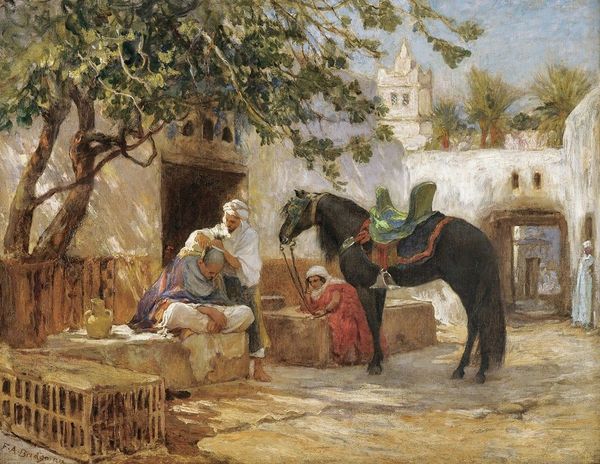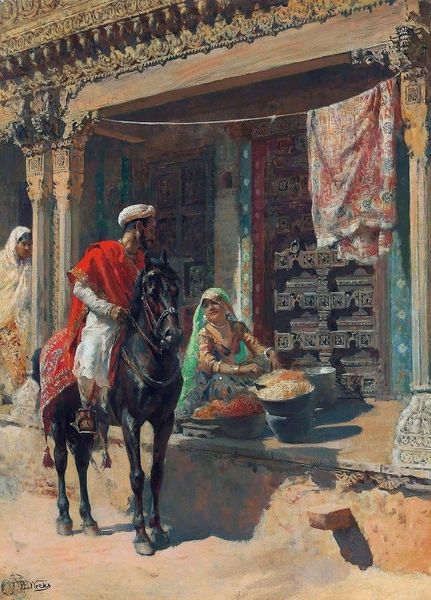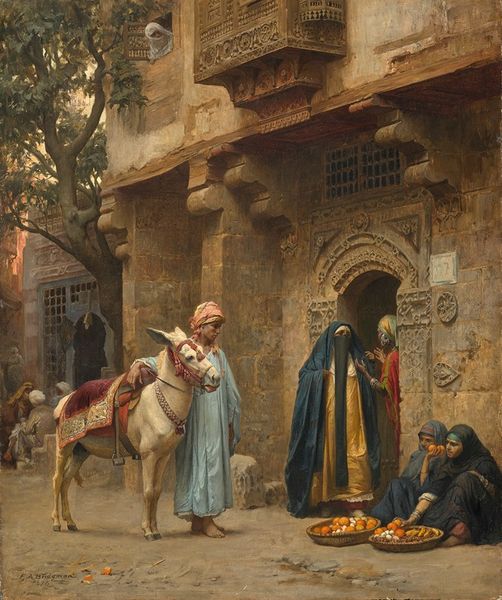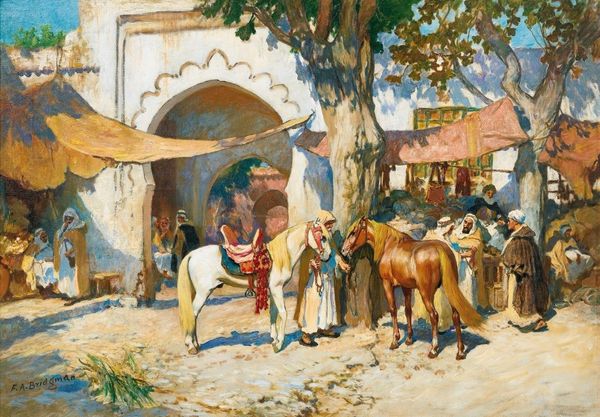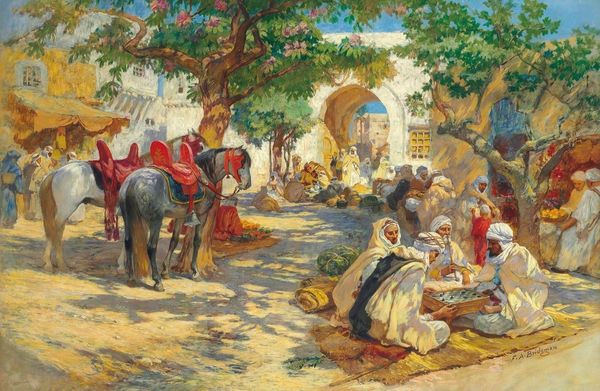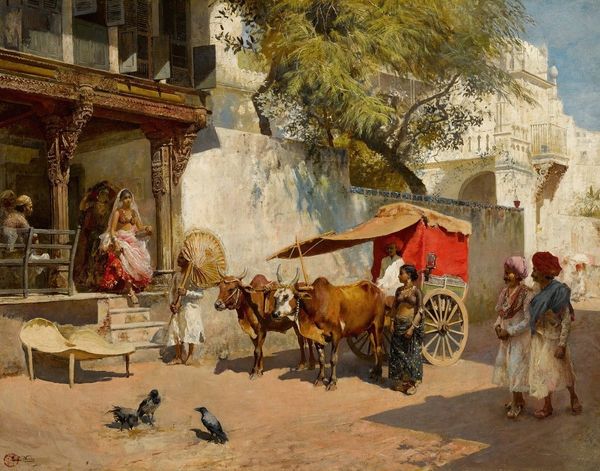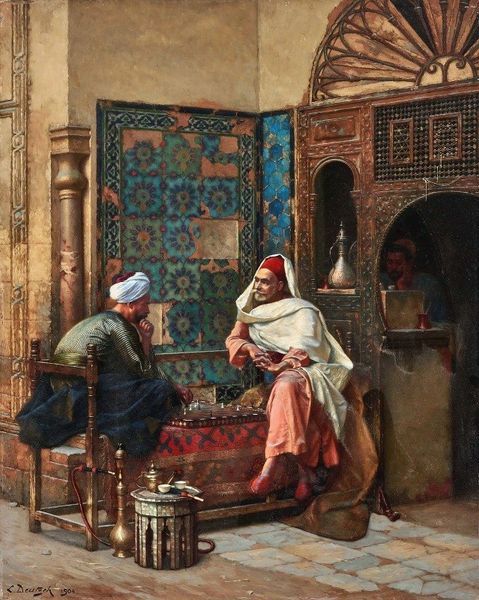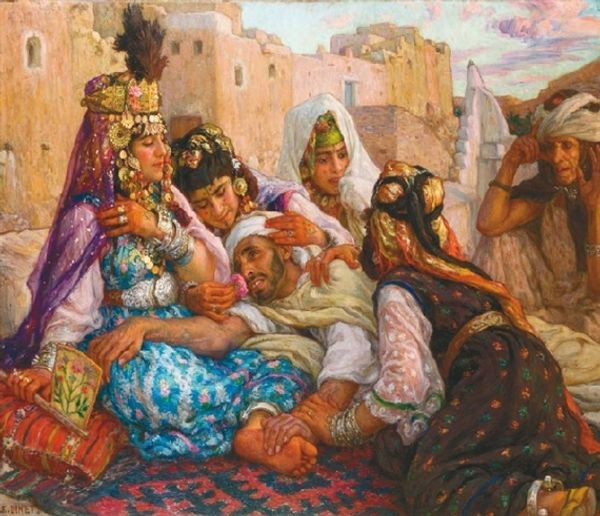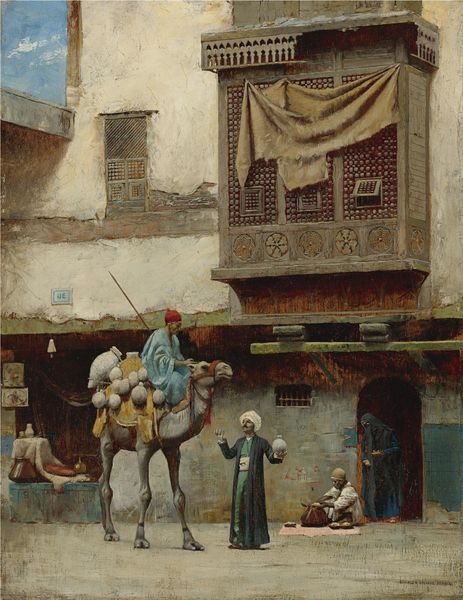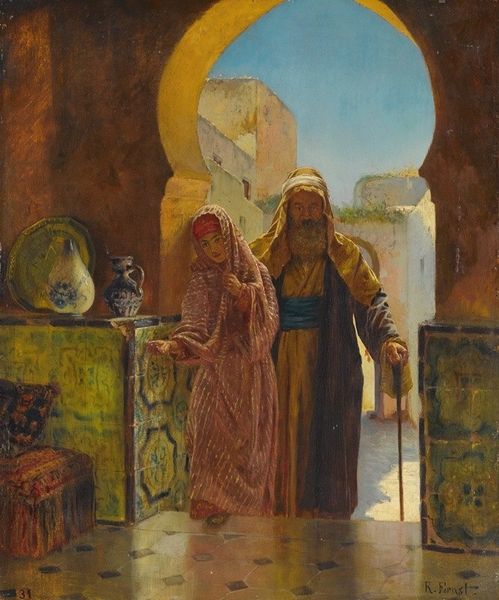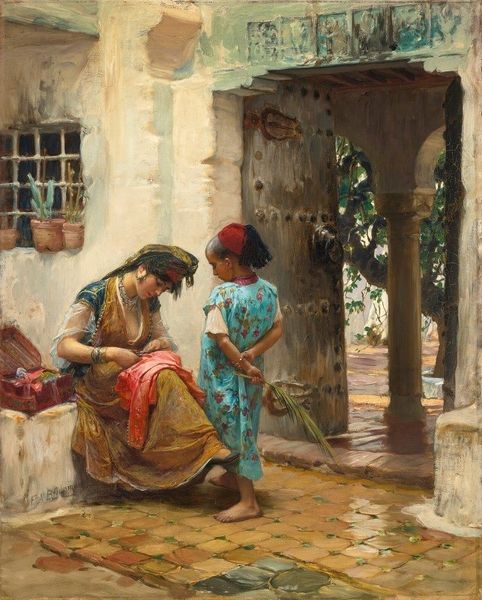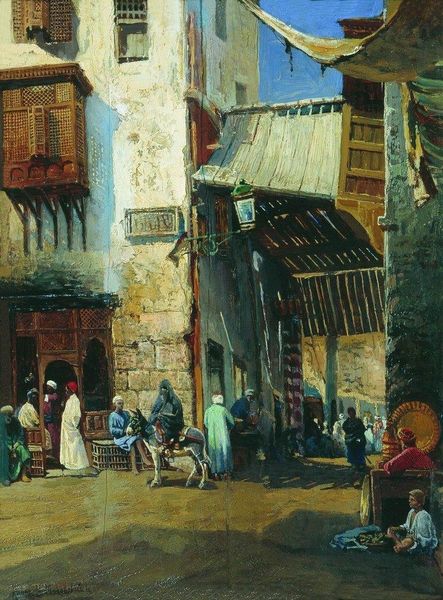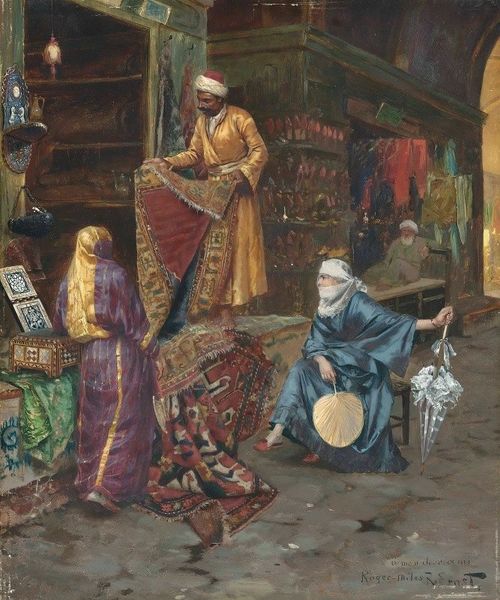
Copyright: Public Domain: Artvee
Editor: Frederick Arthur Bridgman’s “The Orange Seller,” painted in 1920 using oil on canvas, presents a bustling city scene. The colours feel vibrant and warm, though there's a palpable sense of otherness in the depiction of the people. What do you make of Bridgman’s portrayal? Curator: It's important to understand this work within the context of Orientalism. Bridgman, like many European artists of his time, was fascinated by North Africa and the Middle East. But it's crucial to ask: whose perspective are we seeing? How does he construct this vision of the “Orient” for a Western audience? Editor: So, it's less about authentic representation and more about catering to a specific gaze? Curator: Exactly. Note the emphasis on the exotic details – the veiled woman, the turbaned man, even the laden donkey. These were familiar tropes used to signify the “Orient” as a place of mystery and spectacle. Does the way Bridgman portrays the people feel romanticized, maybe even dehumanized? Editor: I see what you mean. There's a kind of picturesque quality that overshadows the individuals. It reduces them to types. Curator: Think about the social and political climate of the 1920s. European colonialism was at its peak, and these images reinforced a power dynamic – a sense of Western superiority and control over the "Orient." It’s not just a pretty scene; it’s a reflection of power. Do you notice how the composition emphasizes the staged nature of the scene? Editor: Yes, the figures almost feel arranged for the viewer. I hadn’t considered the implications of that before. Curator: So next time you see such a piece, you can remember it speaks volumes not just about what's depicted, but also about who is doing the depicting, and why. Editor: Definitely something to keep in mind moving forward! This makes me look at similar pieces very differently.
Comments
No comments
Be the first to comment and join the conversation on the ultimate creative platform.
